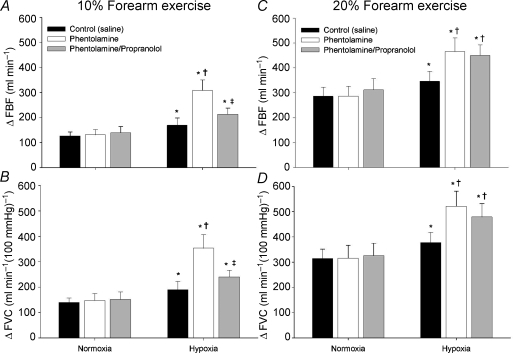Figure 3. Change (Δ) in forearm blood flow (FBF) and forearm vascular conductance (FVC) during exercise at 10% (A and B) and 20% (C and D).
At 10% forearm exercise, blockade of α-adrenergic receptors (phentolamine) revealed a substantial hypoxic exercise vasodilatation (A and B) which was reduced with combined α- and β-adrenergic receptor blockade (phentolamine/propranolol). At 20% forearm exercise, blockade of α-adrenergic receptors revealed a substantial hypoxic exercise vasodilatation. However, combined α- and β-adrenergic receptor blockade did not reduced forearm blood flow (C) or vascular conductance (D) compared to phentolamine alone. Neither phentolamine nor combined phentolamine/propranolol had an affect on vasodilatation during normoxic exercise. * Main effect of hypoxia, P < 0.01 vs. normoxia; †P < 0.05 vs. control (saline); ‡P < 0.05 vs. phentolamine.

